How to get rid of scoops on tomatoes once and for all?
If you find small holes on the leaves of tomatoes, this may be a sign of the appearance pests... A beautiful furry butterfly can seriously harm the landings if you do not take action in time. In this article, we will look at ways to get rid of the cotton scoop on tomatoes.
The content of the article
What is a garden scoop
The scoop belongs to the order of Lepidoptera insects. This butterfly has a color ranging from milky to dark brown or gray. Its wingspan is 30-50 mm. The wings and body are covered with down, it looks very much like a moth.
There are many varieties of these pests. Tomatoes are most often attacked by cotton scoops.
The moth larva is a green or brown caterpillar 30 mm long. It is the caterpillars that pose the greatest danger to the garden. They eat everything that comes their way: stems, leaves, fruits and even roots, while butterflies feed exclusively on nectar.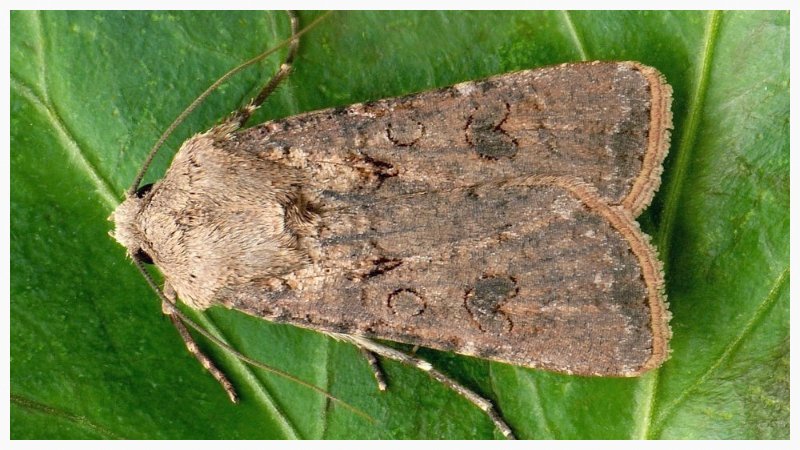
The scoops live for two months: the caterpillar phase lasts 40 days, and the butterfly phase lasts 2-4 weeks.
During the day, both caterpillars and butterflies hide, they are active at night, so it is difficult to find them. And throughout the summer, new generations constantly appear.
The plant reacts very painfully to insect attacks and soon dies. Therefore, the question of how to protect tomatoes from scoops is quite difficult, but solvable.
Important! The danger of the pest lies in the fact that it eats not only tomatoes. Beans, corn, eggplants and other garden crops are susceptible to attack.
Signs of appearance
Noticing these signs on plants, you must immediately take action:
- small holes in the leaves that increase over time;
- holes in the fruit;
- clusters of white round eggs on leaves;
- the appearance of green caterpillars on the plant;
- damaged ovaries or buds.
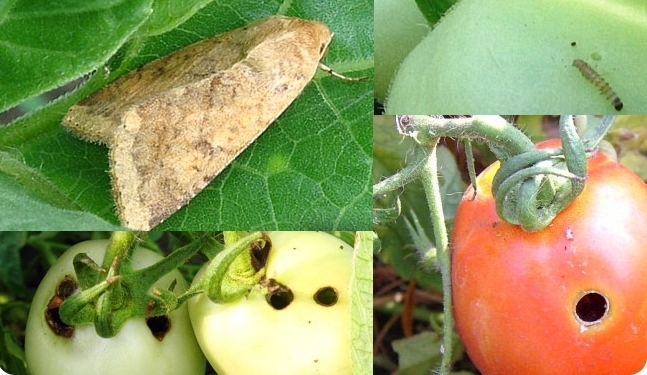
Ways to fight
It is quite difficult to protect plantings from scoops due to its life cycle. If the insect population is already too large, then you cannot do without the help of chemicals.
Chemicals
There are three most effective categories pest control drugs:
- Synthetic pyrethroids ("Fury", "Kinmix", "Karate Zeon", "Arrivo", "Decis Profi", "Inta-Vir") - accumulate only in the surface tissues of the plant, which contributes to the speedy breeding and the least intoxication of tomatoes. Harmless to beneficial insects. They decompose quickly.
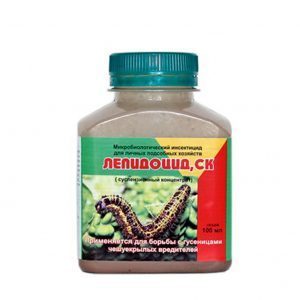
- Organophosphate pesticides ("Zolon", "Danadim", "Fufanon", "Dursban") - highly active drugs with increased toxicity. They have a nerve effect on the victim. This is the best way to handle tomatoes from a scoop outdoors. They retain their effect for up to 20 days in the absence of rain. In the greenhouse, it is worth abandoning the use of organophosphate pesticides due to their toxicity.
- Neonicotinoids ("Proteus", "Aktara", "Confidor") - they penetrate into all parts of the plant, are effective against scoops. At the same time, they have a negative effect on bees, therefore it is not recommended to spray tomatoes during flowering.
Important! Chemical poison is harmful not only to insects, but also to humans. Therefore, gloves and closed clothing should be worn. An excess of a substance on a plant can provoke a burn or intoxication.
Biological methods
Biological spectrum control agents can have a different composition:
- Fungi and bacteria that kill the scoop.
- Vegetable poisons.
- Toxic waste from other organisms.
All preparations are natural, do not contain chemicals, which means they are least harmful to plants and the environment.
The most effective are "Fitoverm", "Akarin", "Aktofit" and "Bitoxibacillin".
Folk remedies
Suitable for controlling a small number of insects. The effect of most folk remedies and drugs is frightening, not destroying. Here are some powerful recipes:
- Chop the burdock leaves and fill the bucket with them. To fill with water. Let it brew for 2-3 days under the lid.
- Dilute 50 g of mustard powder in 1 liter of water. Boil for 10 minutes. Let the solution stand for a day. Before spraying, dilute the product with water in a ratio of 1:20.
- 80 g of onion husks pour 10 liters of water. Leave on for 12 hours.
- 350 g of chopped onions pour 10 liters of water. Let it brew for half a day.
- Pour 500 g of wood ash with a bucket of water. Add 1 tbsp. l. grated laundry soap, mix.
- Chop the garlic arrows and fill the bucket with them. To fill with water. Insist in the sun for a week. Stir occasionally.
- Grind 3 kg of leaves and stems of wormwood and pour 10 liters of water. Bring to a boil, remove from heat and let stand for 20 minutes.
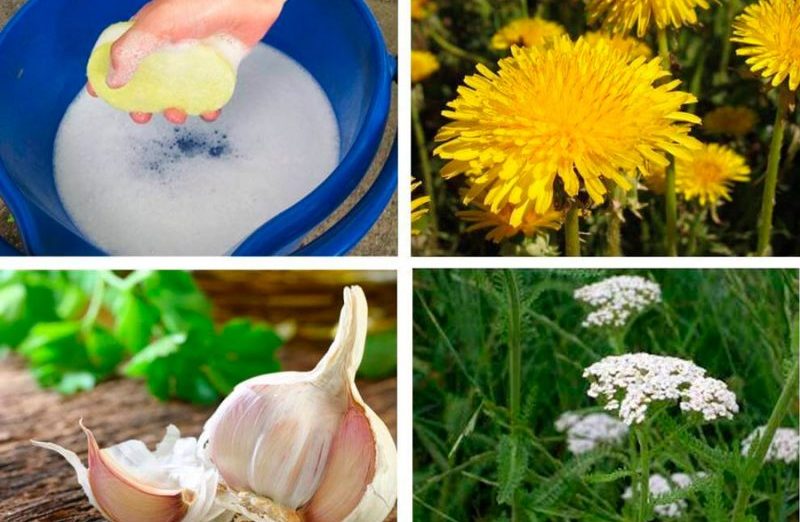
All solutions prepared according to these recipes are used immediately, so it is important to timing correctly. For spraying a spray bottle is perfect. No special protective equipment required.
Processing is best done before flowering. You can add 20 g of ammonium nitrate to the finished solution - it will enhance the effect of decoctions and infusions.
It is necessary to sprinkle the tomatoes from the scoop with broths every 5-7 days for 3-4 weeks - this will drive away new hatched individuals.
Read also:
Prevention of the appearance
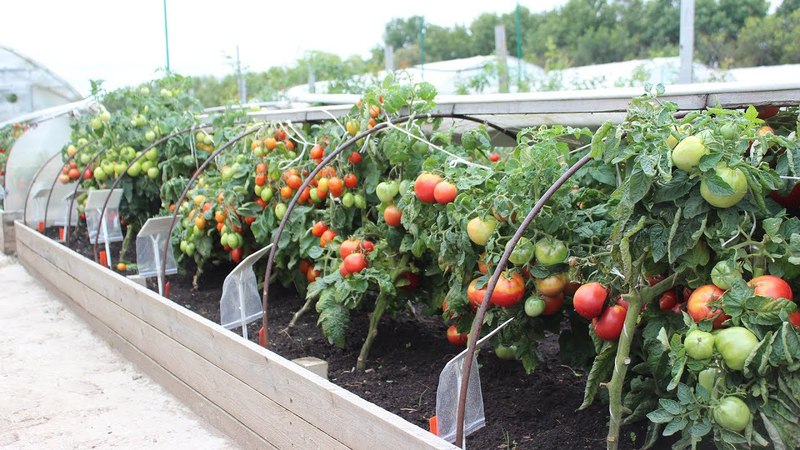
To prevent scoops from appearing on your site, take a number of preventive measures:
- Remove Weeds Regularly - Moths love to lay eggs on nearby weeds, especially flowering species, as they attract butterflies.
- Plan your site - don't plant tomatoes next to the scoop's favorite crops: beans, potatoes, bell peppers, corn, eggplant. Scoops do not like garlic and onions.
- Loosen the soil - the caterpillars end up on the surface of the earth, which negatively affects them.
- Carefully clean and dig up the area in the fall.
- Inspect the plantings regularly for any changes.
Let's sum up
The attentive attitude of the summer resident to the site will help save tomatoes from the garden scoop. In well-groomed, unoccupied beds, pests and diseases appear less often. This is important because moths are difficult to kill due to their high fertility. But even in case of severe damage to plants, do not despair.
Modern chemical preparations effectively fight pests, however, it will not be possible to heal damaged fruits.